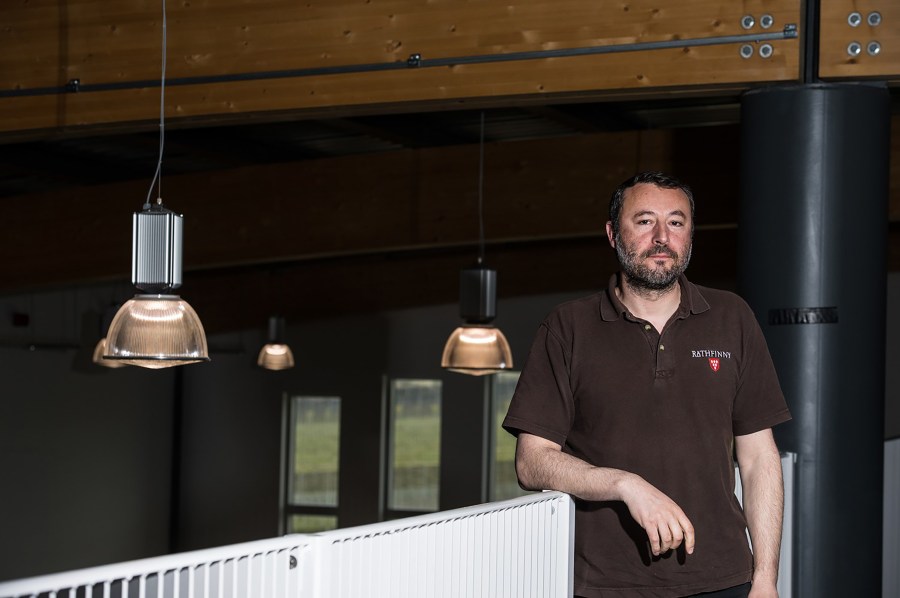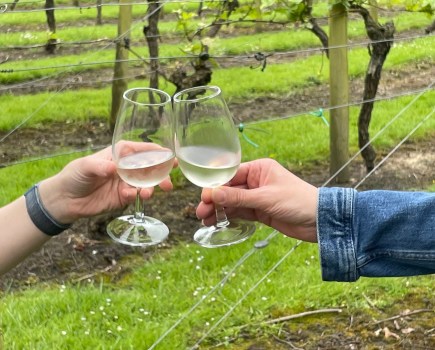In the digital age, film can be a great tool for producers looking to communicate with a wider audience in an interactive, human and approachable manner. Consumers not only buy into the estate’s wines, but also the story of the vineyard and the team behind the bottles.
“People buy from people,” said David Pearce, managing director of Different Perspective. “It is vital to show the passion behind the brand and film provides a great platform for that. We can help producers to show the hard work and personal approach which goes into their wines.”
Creating a brand video doesn’t have to break the bank and basic films of the vineyard on one day or a clip of the winemaker talking about the wines can be produced quickly and costs effectively. While multiple site visits and complex ideas can add to the overall cost, David is used to working with producers of all sizes with a range of budgets.
“The costs certainly shouldn’t put smaller producers off,” said David. “If we are working with a smaller estate on a tight budget and they want to show the vineyard development over the year, for instance, under our instruction they can use a phone with 4K video recording capabilities on a tripod to capture a few seconds of footage of the vineyard on a certain day. If it needs adjusting, we can give feedback and they can go out and reshoot. That can bring the costs right down.”
When it comes to planning filming days, David, who works nationally, will always schedule in some flexibility for the weather. Depending on the length and complexity of the production, producers should expect to give anywhere from a few hours to a few days for the project.
“We try to keep things as relaxed and as straightforward as possible,” said David. “We will be able to set everything up and for producers with limited time we can come and shoot the vineyard footage independently. Quite often early morning and late evenings are the best times for filming outside because the light is ideal, and we don’t need producers to be there for that stage.”
For vineyards who don’t have extensive tasting rooms or cellar door experiences, David often suggests that filming sections of interview in a local pub or restaurant which stocks the producer’s wines, which can not only add a layer of atmosphere but can also be a great way to show consumers’ connections with the product.
“We can show customers enjoying the wines, for instance, with dinner at a restaurant or pub and that is a great way to cement the brand and get the message across of the enjoyment of the wines,” said David. “Trade or individual testimonials can be particularly poignant on film too. They allow the emotional side of the product to come through, especially if people have specific stories about the wines.”
Equally, for producers who are put off by the idea of being on camera, films can be based solely on customers talking about their experiences with the product, drawing on anecdotes of visiting them the vineyard and drinking the wines to get the brand message across.
Good videos should be kept below three minutes and David will work with producers to ensure that a storyboard of images is pre-planned and based on what is being discussed to ensure that the film so gets the message across and makes for very succinct footage.
“We can also advice on the scripting too and can pick out the key topics to discuss on camera,” said David. “We are here to help smaller producers get closer to their customers. We understand that they might not have full-time marketing managers and we can help with that while they focus on making the wine. It is about making a connection, so you want to talk about the story of the estate and how the wine fits in to customers’ lives.”
Film should form part of the vineyard’s wider communication strategy and while specific sales films can be focused on new release wines, the main video should be there to sell the business and to enable customers to see the people behind the wines.
Having a library of films on YouTube, one of the largest and most used search engines, can be an effective way to increase the opportunity for new audiences to find out about the estate. As well as being uploaded to YouTube, once the main video is created the production can be distilled down into a series of shorter clips for use on social media.
“It is a very versatile media,” said David. “Digitally we consume a lot on our phones. Videos are easily digestible even on a small screen and it becomes an accessible way for people to learn about the vineyard. Producers also shouldn’t shy away from putting the content out several times to reach as many people as possible; after all you don’t see the John Lewis Christmas advert just once.”
About David Pearce
David Pearce developed a passion for the wine industry at a young age having undertaken a wine course at catering college. Fresh from education, David was taken on at Reed’s Restaurant in Faversham, Kent, where he spent several years as their sommelier before moving opening his own fine wine business, which specialised in Australian wine. After he was profiled by Jancis Robinson in an article in the Financial Times, David was commissioned to write a book on wine for a major publisher. Several years later, David was working in a Michelin star restaurant in London when a friend approached him to photograph their wedding. What had always been a hobby quickly turned into a new career and as well as capturing weddings, David was one of the only UK-based freelancer photographers to be give accreditation for the Rio Olympic Games. Bringing together his love of the wine industry and photography, David now runs his own photography and filmmaking business, Different Perspective, working with numerous vineyards and wine producers in the UK.




